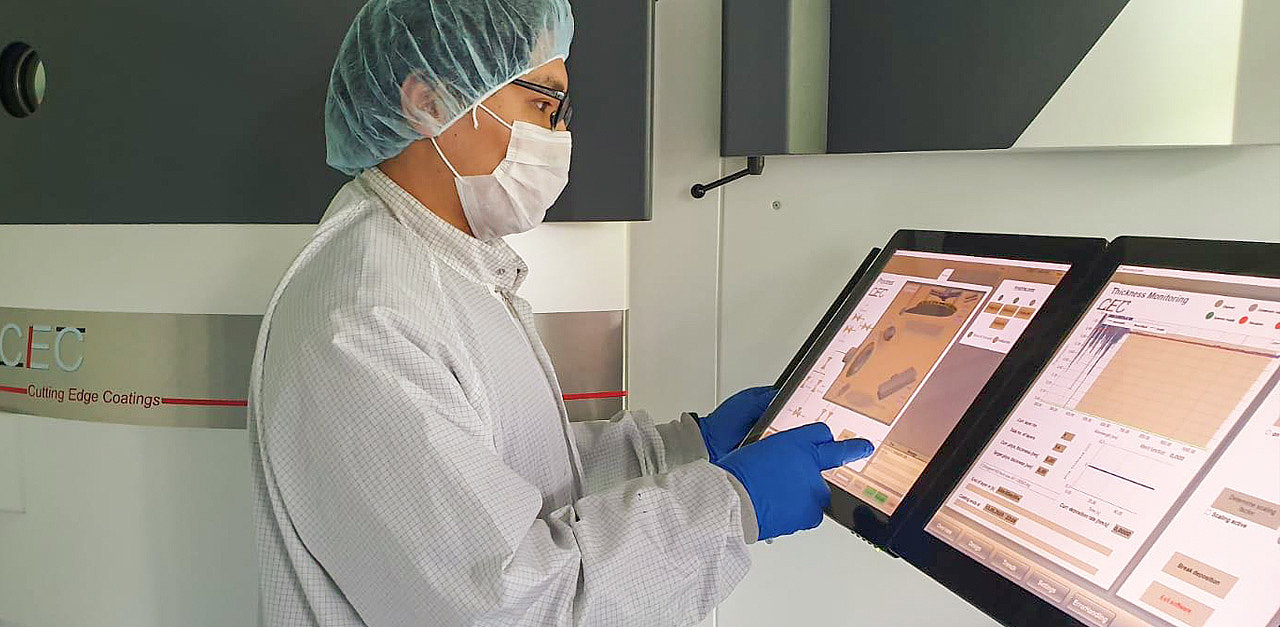In Attosecond physics, group delay dispersion (GDD) oscillations, originating from impedance mismatching between the mirror and the incident medium have always accompanied dispersive mirrors (DM). GDD oscillations broaden the pulse duration and introduce satellite pulses, which will severely impede the pulse quality. Several single mirror methods have been proposed to suppress the GDD oscillations in the late 90s and the early 21st century. These methods, however, are not ideal for a broad one-octave spanning DM. Now the AMO-group of the attoworld-team reports a novel one-coating-run method for producing an octave-spanning complementary dispersive mirror (DM) pair. The anti-phase group delay dispersion (GDD) oscillations are realized by two mirrors of the DM pair due to the certain thickness difference. Both mirrors are deposited within a single coating run enabled by the non-uniformity of the ion beam sputtering coating plant, which is obtained by tuning the distance between the source target and coating substrates. Since the DM pair is produced in a single deposition run, the GDD performance is more robust against deposition errors than that of the conventional complementary DM pair, in which two separated coating runs are necessary. Moreover, the new DM pair is compatible for both laser polarizations under the same angle of incidence, which could effectively reduce the difficulties of alignment for their implementation in laser systems than the double angle DM pair. The new DM pair is successfully applied to compress pulses from a Ti: Sapphire laser system down to 4.26 fs in pulse duration.
Original publication: Yu Chen, Weiwei Li, Zilong Wang, Daniel Hahner, Matthias F. Kling, and Vladimir Pervak
Complementary dispersive mirror pair produced in one coating run based on desired non-uniformity
Optics Express Vol. 30, Issue 18, pp. 32074-32083 (2022)
https://doi.org/10.1364/OE.467664
